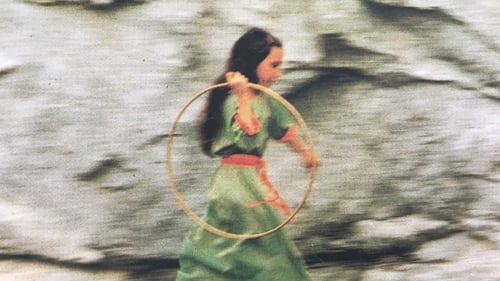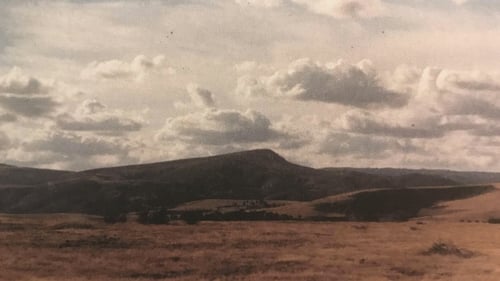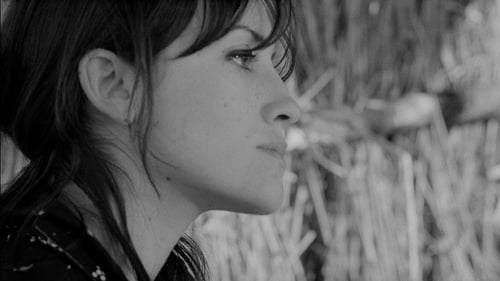António Reis
Рождение : 1927-08-27, Valadares, Portugal
Смерть : 1991-09-10
История
António Ferreira Gonçalves dos Reis, known as António Reis (1927–1991), was a Portuguese film director, screenwriter and producer, poet, sculptor and ethnographer. He was married to Margarida Cordeiro, co-director of most of his films. He is considered as one of the most important directors of his country, due to the originality of his style.
Description above from the Wikipedia article António Reis, licensed under CC-BY-SA, full list of contributors on Wikipedia.

Artur Lopes
In the forties, in a little settlement lost amidst the mountains of Trás-os-Montes, Leonardo tries to survive by buying and selling marten and fox furs, dreaming of the day he’ll close a big deal.

Art Direction
Marking a stylistically and philosophically turn away from the earlier features, The Sand Rose is Reis and Cordeiro’s most abstract, conceptual and literary work. The film’s collage structure gathers texts from multiple sources – including Kafka and Montaigne – and crafts a world of theatrical artifice far from the documentary inspired naturalism of Ana and Trás-os-Montes. Reis and Cordeiro’s least known film has lingered in obscurity and never recovered from the unfairly negative reviews that resulted in its severely limited release. Reis died less than two years later, just as he and Cordeiro were about to begin an ambitious adaptation of Juan Rulfo’s Pedro Parámo. - Harvard Film Archive

Editor
Marking a stylistically and philosophically turn away from the earlier features, The Sand Rose is Reis and Cordeiro’s most abstract, conceptual and literary work. The film’s collage structure gathers texts from multiple sources – including Kafka and Montaigne – and crafts a world of theatrical artifice far from the documentary inspired naturalism of Ana and Trás-os-Montes. Reis and Cordeiro’s least known film has lingered in obscurity and never recovered from the unfairly negative reviews that resulted in its severely limited release. Reis died less than two years later, just as he and Cordeiro were about to begin an ambitious adaptation of Juan Rulfo’s Pedro Parámo. - Harvard Film Archive

Director
Marking a stylistically and philosophically turn away from the earlier features, The Sand Rose is Reis and Cordeiro’s most abstract, conceptual and literary work. The film’s collage structure gathers texts from multiple sources – including Kafka and Montaigne – and crafts a world of theatrical artifice far from the documentary inspired naturalism of Ana and Trás-os-Montes. Reis and Cordeiro’s least known film has lingered in obscurity and never recovered from the unfairly negative reviews that resulted in its severely limited release. Reis died less than two years later, just as he and Cordeiro were about to begin an ambitious adaptation of Juan Rulfo’s Pedro Parámo. - Harvard Film Archive

Screenplay
Marking a stylistically and philosophically turn away from the earlier features, The Sand Rose is Reis and Cordeiro’s most abstract, conceptual and literary work. The film’s collage structure gathers texts from multiple sources – including Kafka and Montaigne – and crafts a world of theatrical artifice far from the documentary inspired naturalism of Ana and Trás-os-Montes. Reis and Cordeiro’s least known film has lingered in obscurity and never recovered from the unfairly negative reviews that resulted in its severely limited release. Reis died less than two years later, just as he and Cordeiro were about to begin an ambitious adaptation of Juan Rulfo’s Pedro Parámo. - Harvard Film Archive

Set Decoration
Ana combines straight-on documentary technique with unexpected flights of dreamlike surrealism. The title character, played by Ana Maria Martins Guerra, is a young Portuguese girl who lives with her grandmother. Through their relationship, we are witness to the Cycle of Life: Grandmother takes care of granddaughter until granddaughter is obliged to do same for grandmother. The scenes between the two protagonists are counterpointed with impressionistic camera compositions based upon famous religious paintings. Ana was impressive enough to earn an American art-house release, a rarity for independently produced Portuguese films.

Editor
Ana combines straight-on documentary technique with unexpected flights of dreamlike surrealism. The title character, played by Ana Maria Martins Guerra, is a young Portuguese girl who lives with her grandmother. Through their relationship, we are witness to the Cycle of Life: Grandmother takes care of granddaughter until granddaughter is obliged to do same for grandmother. The scenes between the two protagonists are counterpointed with impressionistic camera compositions based upon famous religious paintings. Ana was impressive enough to earn an American art-house release, a rarity for independently produced Portuguese films.

Producer
Ana combines straight-on documentary technique with unexpected flights of dreamlike surrealism. The title character, played by Ana Maria Martins Guerra, is a young Portuguese girl who lives with her grandmother. Through their relationship, we are witness to the Cycle of Life: Grandmother takes care of granddaughter until granddaughter is obliged to do same for grandmother. The scenes between the two protagonists are counterpointed with impressionistic camera compositions based upon famous religious paintings. Ana was impressive enough to earn an American art-house release, a rarity for independently produced Portuguese films.

Writer
Ana combines straight-on documentary technique with unexpected flights of dreamlike surrealism. The title character, played by Ana Maria Martins Guerra, is a young Portuguese girl who lives with her grandmother. Through their relationship, we are witness to the Cycle of Life: Grandmother takes care of granddaughter until granddaughter is obliged to do same for grandmother. The scenes between the two protagonists are counterpointed with impressionistic camera compositions based upon famous religious paintings. Ana was impressive enough to earn an American art-house release, a rarity for independently produced Portuguese films.

Director
Ana combines straight-on documentary technique with unexpected flights of dreamlike surrealism. The title character, played by Ana Maria Martins Guerra, is a young Portuguese girl who lives with her grandmother. Through their relationship, we are witness to the Cycle of Life: Grandmother takes care of granddaughter until granddaughter is obliged to do same for grandmother. The scenes between the two protagonists are counterpointed with impressionistic camera compositions based upon famous religious paintings. Ana was impressive enough to earn an American art-house release, a rarity for independently produced Portuguese films.

Sound Director
Reis and Cordeiro’s undisputable masterpiece exploded the meaning and possibilities of ethnographic cinema with its lyrical exploration of the still resonant myths and legends embodied in the people and landscapes of Portugal’s remote Trás-os-Montes region.

Editor
Reis and Cordeiro’s undisputable masterpiece exploded the meaning and possibilities of ethnographic cinema with its lyrical exploration of the still resonant myths and legends embodied in the people and landscapes of Portugal’s remote Trás-os-Montes region.

Producer
Reis and Cordeiro’s undisputable masterpiece exploded the meaning and possibilities of ethnographic cinema with its lyrical exploration of the still resonant myths and legends embodied in the people and landscapes of Portugal’s remote Trás-os-Montes region.

Idea
Reis and Cordeiro’s undisputable masterpiece exploded the meaning and possibilities of ethnographic cinema with its lyrical exploration of the still resonant myths and legends embodied in the people and landscapes of Portugal’s remote Trás-os-Montes region.

Director
Reis and Cordeiro’s undisputable masterpiece exploded the meaning and possibilities of ethnographic cinema with its lyrical exploration of the still resonant myths and legends embodied in the people and landscapes of Portugal’s remote Trás-os-Montes region.

Sound
Jaime, a poem of suffering and loneliness, describes the existence and pictorial work of a man isolated in a psychiatric hospital.

Editor
Jaime, a poem of suffering and loneliness, describes the existence and pictorial work of a man isolated in a psychiatric hospital.

Director
Jaime, a poem of suffering and loneliness, describes the existence and pictorial work of a man isolated in a psychiatric hospital.

Poem
One of the first films that looks at the Portuguese region of Trás-os-Montes. From the mask called “careto” and the popular festival to the everyday reality.

Screenplay
After a stint in the army fighting in Angola, a soldier comes home to find his sweetheart has married his brother. He makes advances towards his sister-in-law, but she turns him down. Discouraged, the man meets a new girlfriend who vows to escape the town's crushing poverty even if she has to steal.

Director
This short film, probably commissioned by the Hidro-Eléctrica do Cávado, shows several aspects of the dams’ network construction in that hydrographic basin, with a commentary read by Fernando Pessa. “Do céu ao rio” was premiered at the Odéon cinema in Lisbon, on January 29, in 1964, but it is in a more fragile heritage situation since its original image negative is not located.

Assistant Director
Local people of Curalha, a small village, keep a tradition of representing the Passion of Jesus, according to a 16th century text.

Producer
Popular theatre re-enactment that goes back to the XVII-XVI centuries, integrating in the pilgrimage of Senhora das Neves, held every year, in the first days of August. The performers are local people, and the show takes place outdoors, in the church square, involving Christians and Moors.

Director
Made by commission of the Porto City Council, Panels of the Porto is a visual essay on the city, gathering sequences filmed between the river and downtown, commented with the reading of poems by authors like Vasco de Lima Couto, Egito Gonçalves, Rosália de Castro, Pedro Homem de Mello, Fernando Pessoa, and António Reis himself, with music by Francisco Rebelo.





